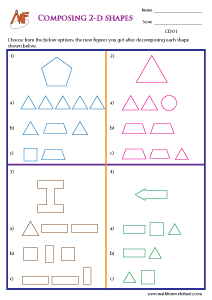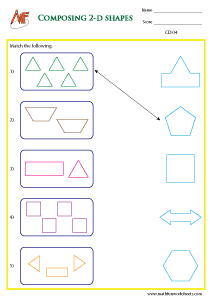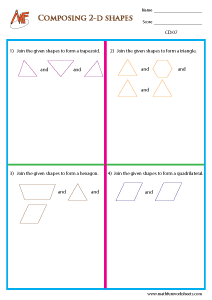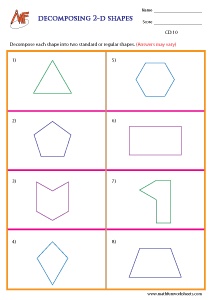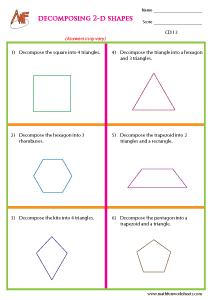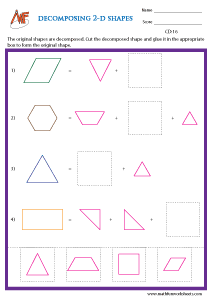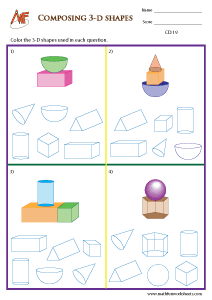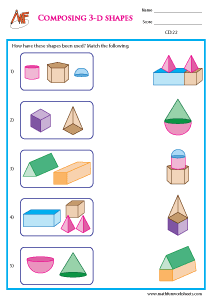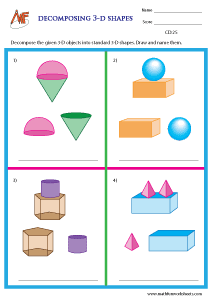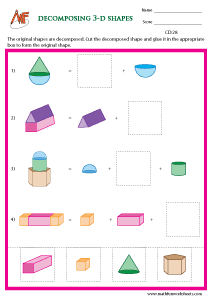Browse by Topics
- English Worksheets
- Science Worksheets
- Kid's Corner
- Numbers & Operations
- Addition
- Subtraction
- Multiplication
- Division
- Decimals
- Place Value
- Roman Numerals
- Skip Counting
- Odd & Even Numbers
- Patterns
- Cardinal & Ordinal Numbers
- Rounding Numbers
- Estimation of Numbers
- Estimation of Time & Money
- Counting & Cardinality
- Comparing Numbers
- Ordering Numbers
- Fractions
- Prime & Composite Numbers
- Squares & Cubes
- Square & Cube Root
- Divisibility Rules
- Factors & Multiples
- Data Handling
- Algebra
- Ratio
- Least Common Factor
- Greatest Common Factor
- Percent Worksheets
- Proportion
- Order of Operations
- Scientific Notation
- Exponents
- Algebraic Expressions
- Evaluating Algebraic Expressions
- Simplifying Algebraic Expressions
- Graphing Lines
- Point Slope Form
- Two Point Form
- Two Intercept Form
- Equations
- Identifying Functions
- Evaluating Functions
- Function Table
- Domain and Range
- Trigonometric Charts
- Quadrants
- Polynomials
- Measurement
- Geometry
- Word Problems
Free Composing and Decomposing Shapes Worksheets
Composing and decomposing shapes is an important concept in early geometry. It helps students understand how shapes are formed and how they can be broken apart. When we compose shapes, we build larger shapes using smaller ones like triangles, rectangles, or circles. On the other hand, when we decompose shapes, we break down a complex shape into its smaller parts. This process builds a strong visual understanding of how shapes work. It also improves spatial reasoning and problem-solving skills.
Teachers use hands-on activities to teach this concept. For example, students might use pattern blocks to make new shapes. They might combine two triangles to form a square or several rectangles to create a larger rectangle. These tasks show how simple shapes come together to form complex ones. Similarly, students may cut a hexagon into triangles or split a rectangle into squares to see how decomposition works.
This skill connects directly to real-life thinking. Architects, engineers, and designers often compose and decompose shapes in their work. By learning this early, students prepare for more advanced math topics like area, perimeter, and geometry proofs.

Decomposing a composite shape:

When you have practiced all the worksheets here, you will easily use two- dimensional shapes like squares, rectangles, triangles, trapezoids, circles and three- dimensional shapes like cubes, cuboids, hemispheres, right circular cones, rectangular pyramids to create composite shapes and also to create new shapes from composite shapes.
Fun filled, logical thinking worksheets are here for free download. Think well before you build and break!!!
Composing and Decomposing Shapes Printable Worksheets
Match the following 2 D shapes

Match the following 2 D shapes
Compose shapes to form new shapes

Compose shapes to form new shapes
Decompose - Cut Paste activity 2D

Decompose - Cut Paste activity 2D
Match the following - 3 D shapes

Match the following - 3 D shapes
Decompose to new shapes and name them

Decompose to new shapes and name them
Decompose - Cut Paste activity - 3 D

Decompose - Cut Paste activity - 3 D
Moreover, composing and decomposing shapes supports learning in measurement. Students can find the area of a large shape by breaking it into smaller, easier parts. This makes math less overwhelming and more logical. It also encourages creative thinking as students explore multiple ways to build or take apart shapes.
In the classroom, worksheets, puzzles, and interactive tools make this topic fun and engaging. Students get to experiment, try new solutions, and see how shapes relate to each other. Over time, they gain confidence and develop a deeper understanding of geometry. In short, composing and decomposing shapes builds key math skills that students will use throughout their education.

